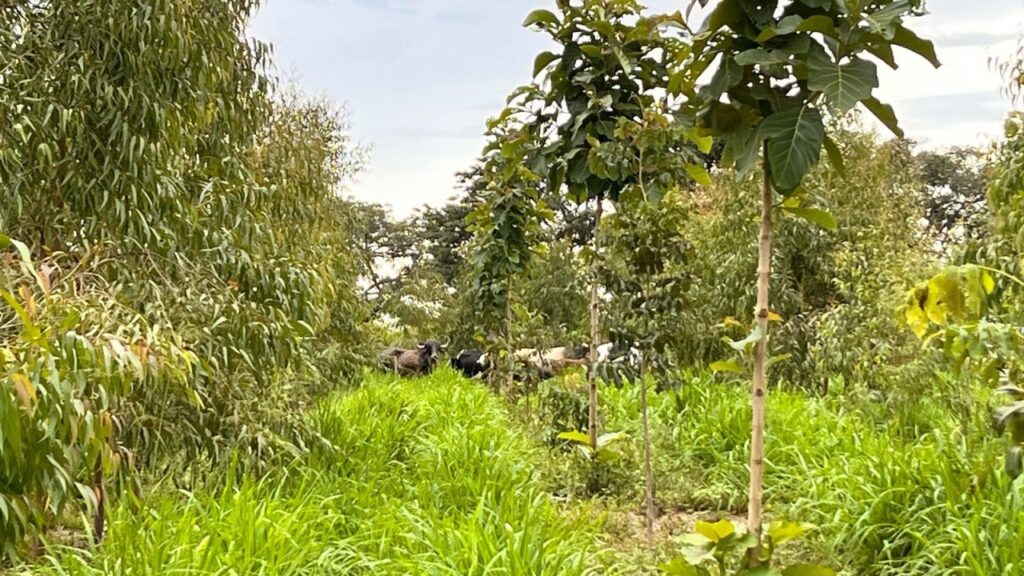At a time of escalating climate urgency, geopolitical tensions, and resource instability, the question becomes impossible to ignore:
Why do we still undervalue food?
As globalization comes under strain from trade wars and climate pressures, the fragility of our global food systems is becoming increasingly visible. Once considered a stable backdrop to modern life, food supply chains are now revealing deep vulnerabilities in how we produce, distribute, and value what we eat.
And yet, despite its essential role in survival, economic stability, and development, we still drastically undervalue food — and the systemic risks embedded in our food systems.
A Critical Disconnect
Why is food — a fundamental resource — still treated as a secondary issue by policymakers, investors, and the broader public?
To provoke deeper reflection, let’s explore this through an analogy: the way we treat food versus how we treat energy, particularly regarding security and strategic value. Building stable and secure food systems has always been central to human development — enabling our transition from nomadic tribes to complex civilizations.
But today, global food systems are shaped more by trade policies and short-term subsidies than by long-term strategies for resilience, equity, and sustainability. This output-focused approach exposes us to cascading risks.
Brazil as a Case Study
Brazil is a global agricultural powerhouse. It is undeniable how important the country has been in recent decades in avoiding food shortages and ensuring global food security. To put this in perspective, grain production in Brazil grew from 47 million tons in 1977 to 312 million tons today.
Today, it is estimated that Brazil feeds over 1.4 billion people globally — particularly in countries with food production deficits — generating US$164.4 billion in food exports in 2024, mostly in low-value-added commodities.
But when we break down the export value by the number of people fed, it amounts to just US$117 per person per year — or less than US$10/month per person.
So the question remains: How can something so essential be priced so low?
Because our global food economy (not just in Brazil) has huge hidden long-term costs and risks: environmental degradation, rural inequality, and systemic fragility. And is built on:
- Large-scale monocultures
- Cheap labor in precarious conditions
- Public subsidies and tax incentives
These factors mask the reality: we are often deploying land, climate, and resources inefficiently — growing crops misaligned with local comparative advantages. Much of the value is captured upstream by agri-input industries, leaving farmers with diminishing returns.
And in the end, sometimes it’s clearer that it can seem difficult to understand that instead of just scaling up to try to dilute some fixed costs and gain some more bps in the margin (in a model where, a lot of times, the return is lower than the cost of capital, especially if adjusted for all the subsidies and tax incentives), we need to rethink:
- The way we are producing
- What we are producing
- What is really consuming my margin
- How can I optimize it?
- How can I capture more value in the value chain?
- How can I increase the perception of my products?
- How can I make my results more predictable and less risky?
- How can I have a business more aligned with my context that can share more value creation with all the stakeholders and promote social development in a broad way?
One of the clearest signs of this disconnect is how agricultural producers are increasingly compared to extractive industries, trading in the stock markets at valuation multiples more common in oil or mining, and sometimes even below their net assets value.
What If We Treated Food Like Energy?
If agriculture is treated like an extractive industry, paradoxically we still underestimate its strategic importance.
We treat energy as a strategic asset:
- We manage oil reserves
- We track OPEC decisions
- We hedge against future disruptions
- We treat energy security as national security
But with food? We rely on open markets — and hope for the best with production increasing and resilience amid all the challenges exacerbated by climate change.
Now imagine:
- Imagine if Brazil suddenly halted exports of soy, beef, or poultry. The global food market would face immediate chaos. Prices would surge. Supply chains would fracture.
- At a moment when the U.S.–China trade war makes agricultural commodity trade between the USA and China unfeasible, imagine Brazil and Argentina — two major agricultural exporters of basic food commodities — decide to form a food cartel, similar to OPEC for oil, setting prices for soy, beef, corn, and poultry in a way that ensures fair and sustainable returns for producers. I’m almost sure it could hit China much harder than the US 245% tariffs on Chinese products.
- Imagine if the product disruptions we’ve seen in coffee and cocoa became more and more frequent in a context of climate change, and also started to affect key commodities that form the basis of diets and food systems such as rice, soybeans, and wheat.
Yet we do not plan for food shocks with the same urgency we apply to energy shocks.
Even at the consumer level, the contradiction persists: We pay a premium for high-octane fuel to protect engines and boost performance, but we regret spending more on regenerative, nutrient-dense food that protects our health and longevity.
A Call for an Agricultural Renaissance
The global food system is at a pivotal moment. We must choose between:
- Continuing down a path of short-term, volume-first extraction, or
- Leading a global agricultural renaissance centered on: Resilience, Fair value creation, Ecological sustainability and Strategic food security
This shift would empower producers to:
- Build regenerative and durable food systems
- Generate lasting rural prosperity
We must stop treating food as a low-cost commodity — and start recognizing it as a strategic pillar and the foundation of our development.

➡️ Photo of an agroforestry pasture on a Luxor Agro farm — promoting landscape restoration and systemic change in cattle production in Brazil, toward a more regenerative, resilient and profitable model.
